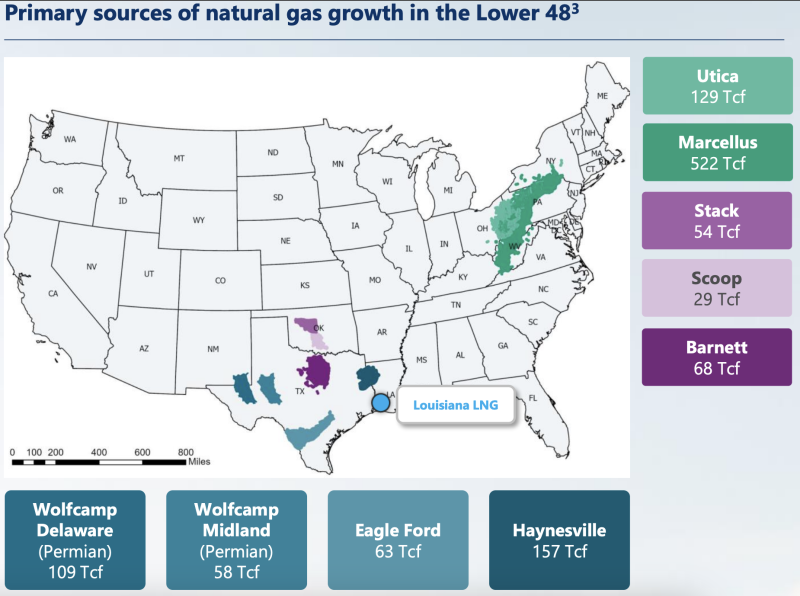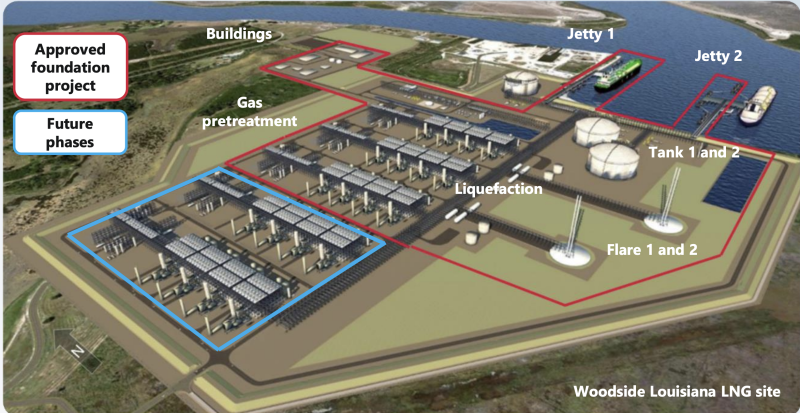Woodside has sanctioned its three-train Louisiana LNG development, targeting first liquefied natural gas (LNG) in 2029.
In announcing final investment decision (FID) on the fully permitted project on 28 April, Woodside CEO Meg O’Neill said Louisiana LNG is the first greenfield US LNG project to achieve FID since July 2023.
Located near Lake Charles, Louisiana, along the US Gulf Coast, Louisiana LNG is “the largest single direct foreign investment in Louisiana’s history and the first greenfield US LNG project sanctioned since the lifting of the LNG pause,” she said during an investor briefing on the project.
Louisiana LNG was previously the Tellurian-owned Driftwood LNG project. In July 2024, Woodside announced it was purchasing Tellurian for $900 million as a means to further its global LNG ambitions by gaining an LNG foothold in the US. That deal closed in October.
O’Neill said the project is significantly derisked with a mature design; all permits; construction by Bechtel under a lump sum engineering, procurement, and construction contract; and a majority of sales contracts already signed. The project has reached an advanced state of construction with completion of the pilings and foundation work in progress for the LNG tanks, she said.
The main project calls for three trains, each with a capacity of 5.5 mtpa, for a total of 16.5 mtpa. By the early 2030s, Woodside expects to deliver about 24 mtpa from its global LNG portfolio.

The Louisiana project is fully permitted for a total capacity of 27.6 mtpa, with the potential for additional LNG production from two more trains if the expansion phase reaches a FID. She said potential future expansion could lower unit costs and enhance returns with brownfield economics.
O’Neill noted that the gas resource base available to the project exceeds 1,200 Tcf.
“There are significant quantities of low-cost natural gas available today,” she said.
For comparison, Woodside’s Scarborough project in Western Australia draws from about 11 Tcf of gas and is expected to come on-line in 2026.
“In the case of Louisiana LNG we’re talking about a resource base more than 100 times the size of Scarborough,” she said.
At its peak, Louisiana LNG will consume less than 2% of the US natural gas market, which currently stands at 105 Bcf/D.
“Our sourcing strategy is best described as a layered approach. We’ll feature diversity of supply from multiple basins, layered under contracts with different durations and volume commitments, and from a variety of US gas producers,” O’Neill said.
Woodside forecasts total capital expenditure for the Louisiana LNG project, pipeline, and management reserve at $17.5 billion, of which Woodside’s share is $11.8 billion. Stonepeak, an investor in Louisiana LNG Infrastructure LLC, will provide $5.7 billion toward the expected capital expenditure for the project on an accelerated basis, contributing 75% of capital expenditure in both 2025 and 2026.
Woodside expects the initial project to generate about $2 billion in annual net operating cash in the 2030s after reaching full capacity and for the project to have a payback period of 7 years.
The project has a 4-decade or longer asset life.
The trains will use Chart’s IPSMR (Integrated Pre-cooled Single Mixed Refrigerant) liquefaction technology, and each train will have four high-efficiency LM6000PF+ aeroderivative gas turbines for refrigerant compressor drivers. Baker Hughes is supplying the mixed refrigerant compressors and control units.
The trains will be capable of flareless restart without gas recycle. The site will house two 235,000-m3 LNG storage tanks along with a pair of jetties able to accommodate large LNG carriers.
Sourced natural gas will arrive through a fully permitted 37-mile (60 km) 42-in. pipeline with a capacity of 3.1 to 3.4 Bcf/D, carrying an estimated cost of $1.1 billion. Eleven permitted interconnections will provide flexibility in gas supply. Baker Hughes will supply electric drive ICL (Integrated Compressor Line) compressors.
“Louisiana LNG is a large-scale high-quality project which has been significantly derisked.
We have the commercial structure, partners, development plan, and markets to ensure successful execution,” O’Neill said.


